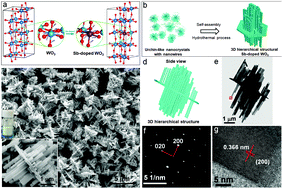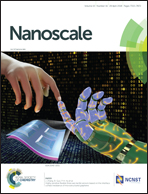Application of 3D hierarchical monoclinic-type structural Sb-doped WO3 towards NO2 gas detection at low temperature†
Abstract
Currently, the development of semiconducting metal oxide (SMO)-based gas sensors with innovative modification and three-dimensional (3D) structural designs has become a significant scientific interest due to their potential for addressing key technological challenges. Herein, gas sensing devices based on the 3D hierarchical monoclinic-type structural Sb-doped WO3 (HMSW) gas sensing material were successfully constructed by ordered assembly of urchin-like monoclinic-type structural (P2/m) Sb-doped WO2.72 (W18O49) (UMSW) nanocrystals and nanowires. The crystalline microstructure, composition, morphological characteristics, and possible growth mechanisms were systematically investigated. The results of the gas sensor measurements, performed simultaneously on multiple samples, indicated that the 3D HMSW material has superior sensitivity (S = 122) and high selectivity to ppm-level NO2 at 30 °C with a significantly larger response than the best-reported values from other WO3-based gas sensors fabricated so far. All the results clearly demonstrate that the combined effects of abundant structural defects derived from Sb doping modification, reduced band gap, and 3D hierarchical microstructure synergistically play a key role in the NO2 gas sensing performance. Such excellent gas sensing performance foresees the great potential application of 3D hierarchical structural WO3-based sensors for fast and effective detection of toxic gases that can aid in human health and public safety.

- This article is part of the themed collection: 2018 Nanoscale HOT Article Collection


 Please wait while we load your content...
Please wait while we load your content...